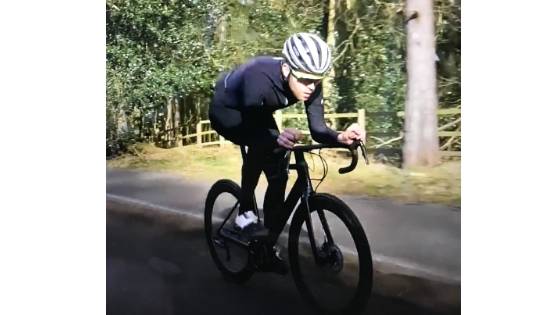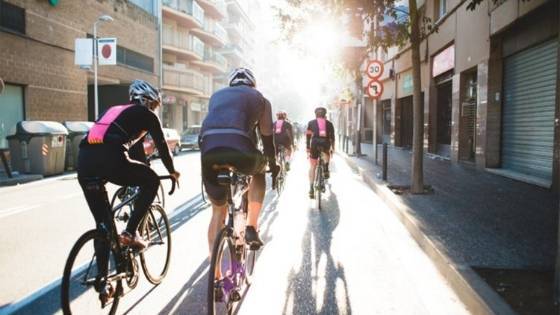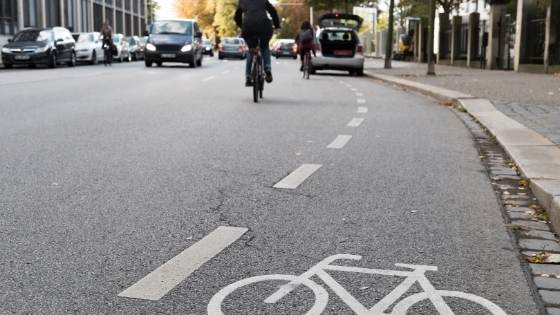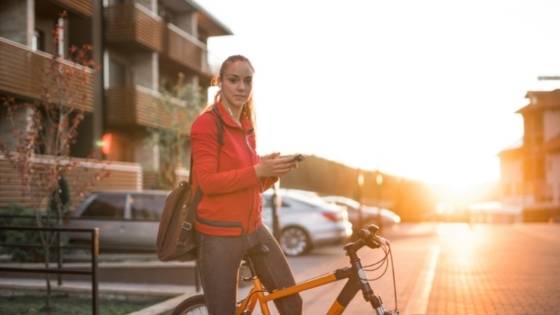When it comes to cycling your bike in cities and urban environments riding on the road could be the best and safest place. However, it can be daunting and stressful if you have never cycled your bike in moving traffic on the road.
Here are my best tips to provide you before you embark on your first ride on the roads and highways.
The most valuable information about cycling on the road is being confident and acknowledged by other road users. Constantly expect the unexpected and always plan your route before starting your journey.
Table of Contents
1. Ride Your Bike With The Flow Of Traffic Never Against
Regardless of the Country you’re cycling in, you must always ride your bike on the same side of the road with the flow of traffic.
If you ride against the traffic, the chance of you being struck by a vehicle is higher, especially when you enter junctions and turnings.
Besides, some countries, cities and states will view this as a traffic offence, and you could be fined and receive penalties on your driver’s license.
Therefore, if you drive on the left-hand side, you must likewise ride your bike on the left-hand side of the road. It’s the safest position on the road, and drivers can see you ahead.
They will move around you once it is safe to travel past or wait behind until it’s free from traffic.
When your cycling on the road, you have priority on the highway, not the vehicle. Meaning you can legally ride a bike on the road, and cars and other vehicles must wait to pass you, so be confident.

2. Ride 0.5m Away From The Curb, Sidewalk Or Street
To prevent yourself from being confined between the curb or sidewalk and passing traffic, try and leave at least 0.5 meters from the side of your bike and the footpath.
This will provide you with enough clear space to cycle along the road or highway but stop vehicles from knocking you off the road.
It’s essential to keep a stable and predictable riding position, so other road users understand and pre-empt what you’re doing.
Riding erratically will confuse drivers and put you at more risk.
Additionally, most water drains are located against the curbside; therefore, a 0.5m distance will limit you from cycling over these object which can become slippy following rain or heavy downpours.
If you begin to lose balance or fall, make sure you position your bike aways from flowing traffic and into the footpath.
To find out the exact rule of cycling your bike on the sidewalk or pavement check out this article.

3. Never Ride More Than Two Cyclists Side-by-Side
If you are cycling with a group of friends or join other cyclists, you must never cycle together with more than two side-by-side.
In The UK, it’s illegal, and you will be prosecuted for traffic offences and receive a monetary fine and points on your driver license.
Furthermore, it’s extremely dangerous because it places other road users in jeopardy and could cause a traffic accident.
Driver’s will get frustrated and force past, leading to all cyclists being pushed into each other, causing a bike pile-up.
Riding single file will provide the group with the fast and most aerodynamic cycling position. If you have to overtake another cyclist, perform the manoeuvre when it’s safe and there’s no traffic behind you.
If you approach two cyclists riding side-by-side, you need to wait until the road is completely clear before you can overtake.
Or simply use your bell to get their attention, and they can move into a single file allowing you to pass.
Being smart with your road position will keep you safe during busy traffic periods.
4. Use Hand Signals When Turning Left Or Right
The majority of bikes aren’t fitted with signal lights or indicators, informing other road users where you’re travelling.
Therefore, you must apply hand signals to notify drivers and pedestrians you are turning left or right. Before making the turn, it’s important you make eye contact with the driver or pedestrian so you know they have acknowledged your signal.
If you have vehicles behind or turning into traffic, glance over your right shoulder to see if there’s a gap in the traffic. When it’s safe, move out, take a riding position in the centre of the lane and hand signal to the right or left.
Once the junction appears, move into the new road and take up position 0.5m away from the curbside in the direction of traffic.
Use hand signals when you turn regardless of turn left because other cars could try and cut in because they didn’t understand your movements.
And It’s important you use your entire arm to show your direction because using your hand or fingers can be missed.
5. Avoid Under Taking Large Vehicles
The larger and longer a vehicle is, the more blind spots they have, making it impossible to see you below.
Consequently, never overtake a large vehicle when riding your bike if the vehicle is still moving. If you need to pass, be confident that the vehicle has come to a complete stop and has pulled over to the side.
Never undertake because if the vehicle moves towards you, you will get trapped between the curbside and the vehicle, potentially causing serious injury.
Moving in different lanes of traffic avoids undertaking because the large vehicle can confine you between other moving lanes and traffic.
Moreover, the large vehicle might suddenly decide to turn left, and you will be likely crushed under the vehicle.
The biggest cause of serious accidents and death in cyclist on the roads are vehicles turning into cyclists, and undertaking increases the risk dramatically.
6. Always Stop At Red Stoplights And Traffic Lights
If your cycling on the road, you must adhere to the highway code, which includes stopping at red traffic and stoplights.
They are designed for the safety of other road users to prevent vehicles from crashing. If you ride through red lights, you could be putting yourself in danger because other road users won’t expect you are coming through.
If you’re in a line of traffic and it’s safe to move your way through traffic, get yourself to the front of the traffic.
That way, when the lights turn green, you can move off without the danger of other road users cutting in front of you. Beware of undertaking large vehicles and be mindful of motorbikes because they will do the same.
Before you move off, it’s essential you have the correct gear selected so you can push off the peddles and continue cycling.
If you forget to change gear and are on a heavy gear range, you could fail to move. This increases your chances of falling into moving traffic.

7. Avoid Cars Doors Opening By Moving Round Parked Cars
The biggest risk of cycling on the road, especially in urban streets and cities, are parked cars.
When you are approaching them, give yourself loads of room to move around and at least 1 meter from the parked car. The reason, someone might get out of the vehicle, and the car door will become a significant problem.
Therefore, always anticipate that someone is getting out of the car and get yourself plenty of room to move around even if the car door suddenly opens.
Additionally, people often run out between parked cars and won’t expect a bike to be approaching.
The extra space provides you with the ability to move away if this occurs.
Be mindful of traffic behind you, as they will have to give you extra space to get past. So, it’s crucial you move out and get your road position early to prevent yourself from being trapped between the parked car and the vehicle passing.
8. Be Visible By Wearing Bright Clothing, Lights And A Bell
Wearing bright colours such as green, orange, and yellow make you stand out from other objects on the road.
The worst colours to wear are dark blue, black and brown. You will bend into the surroundings, and it can be difficult for other road users to recognise you. Bright socks and shoes can also assist you in standing out.
If you are riding in low light or rain, always have bike lights on the front and rear of your bike.
I would have lights that are at least 200 lumens which makes you visible at greater distances. The brighter the glow, the more you are easily recognised. Have a bright white light at the front of your bike and a red light at the rear.
Furthermore, to make yourself aware to other pedestrians, fix a bell to your handlebars.
Ring your bell if people haven’t acknowledged you are you think you might collide with them. Most bikes come with a standard bell fitted, so this will be sufficient.

9. Don’t Wear Earphones Or Headphones When Cycling
The problem with wearing something over your ears to listen to music can limit the amount of noise you can hear around you.
It can also make it challenging to recognise when danger is approaching because the sound is decreased. When you’re riding your bike in a busy urban area, you need to have all your sense working, particularly sound.
If you can’t ride without some music or entertainment, remove one earphone. That way, you can still hear 50% of your surroundings but can listen to your favourite songs.
Earphone can be used but you must experience the roads without them for you first couple of rides.



